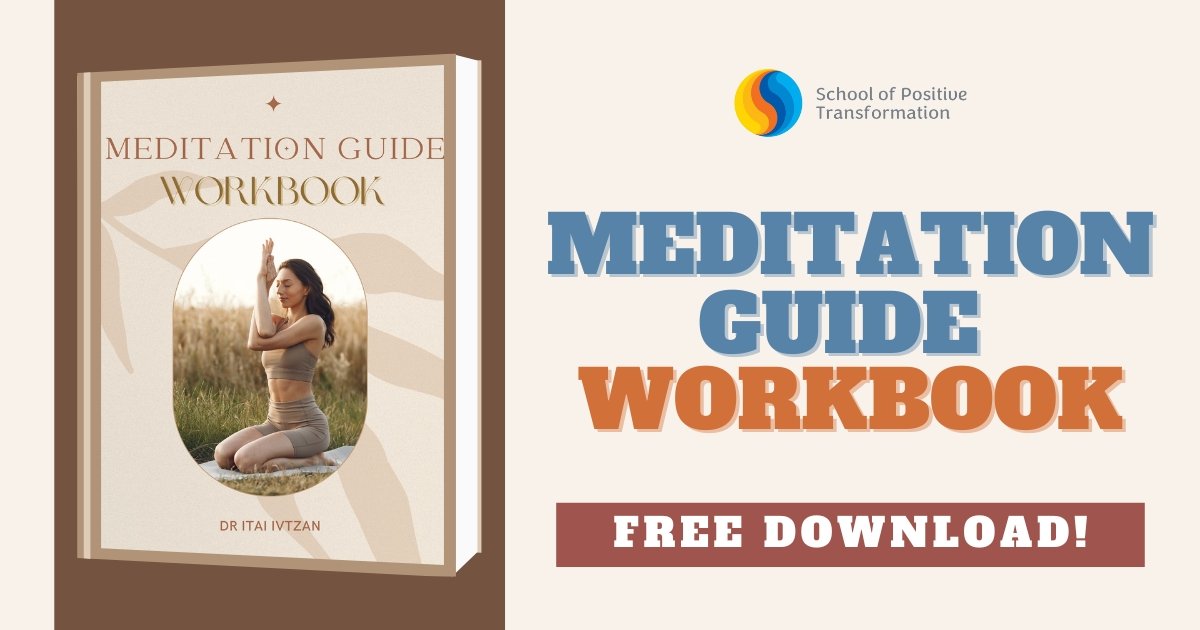Teaching Mindful Meditation: Exercises and Benefits
 Now, that’s our ultimate goal!
Now, that’s our ultimate goal!
The zenith of peace and awareness. I learned that I could reach those two through mindfulness.
It was only when I tried practicing mindful meditation that I realized that this was something that I have long been looking for.
In this article, you will learn tips on how to become a mindfulness instructor, yes it might be tempting to quickly dive into teaching mindfulness, but in this article we will first have a quick run through about mindfulness.
Compared to the usual meditation, MINDFULNESS is
NOT the state of nothingness but
RATHER the state of being accepting and aware of the present— and being in harmony with it.
Before you continue you might like to consider our free worksheet on exploring “Meditation Guide”. Please download this worksheet here.
In This Article:
Mindful Meditation
Two Important Exercises to Help In Mindful Meditation
Facing Death
Increasing Self-awareness
Benefits of Mindful Meditation Teaching
Mindful Meditation
Mindfulness is the state of being present, curious, conscious, and open at the same time. I loved the concept of mindfulness from the first time I learned about it, it can be simply described as looking within and outside ourselves, seeking to understand and accept without judging. My friends have become a fan of meditation after college. I actually first heard about mindfulness from them. The concept of mindfulness is like the bridge between positive psychology and wellbeing. There is also a practice called mindful meditation that is being used in scientific studies, and therapies. In meditation teaching with a purpose of scientific use, a sense of conscious awareness is essential in clinical interventions like mindfulness-based stress reduction (MBSR); mindfulness-based cognitive therapy (MBCT); and dialectical behavior therapy (DBT). These meditation interventions mentioned have been used in experimental studies focusing on parenting, athletes, healthcare workers, patient in psychiatric institutions, and those with chronic or terminal illnesses.
Two Important Exercises To Help In Mindful Meditation
I will share to you two important exercises to help you start with your mindfulness meditation, these two are the most simple prompts that are truly helpful and effective to jumpstart your practice.
 1. The first thing is, we should face Death.
1. The first thing is, we should face Death.
Yes, you read it right. Death. The experience entailed by looking at the peak of our mortality is indeed changing—I went to reflect on the endpoint of my life and it has opened my mind to a different kind of understanding. How did I do it? Well first, I looked into the possibilities of what my final moment might be, putting into context my present situation, decisions, priorities, and goals. Then I looked in the perspective of, what if I made the worst decisions, how will my concluding chapter be? Who would be there? What will be there? Alternatively, you can try to imagine taking your final breath after living a life in with the most fulfilling life, what do you think would be the biggest influences you would have left behind? These exercises above where I examined how life would have passed me by, helped me understand the biggest fears I have and the aspirations I have and these helped me clarify my meaning and purpose to live. I have learned to accept that there is a certain endpoint and though it is unknown, I should come to terms that it comes for everyone—not just for ourselves, but also for our friends and loved ones. I know and have seen how a loss of someone can bring a certain impact on a person’s wellbeing. It is in accepting the certainty of death that a person makes peace with their existence.
Another way that we could look at it is how death may come after aging. We do know how difficult it would be to grow old. We all would love to age gracefully hoping to easily learn to accept the wrinkles, sagged skin, falling teeth, and fragility that comes with it. How do you imagine yourself aging? How do you think you will come to terms with it?
2. Increasing self-awareness— understanding how things are up only to an extent when looking at a broader perspective
In my first tries, I have always struggled in keeping my mind from wandering and one thing that helps me go back to my state of mindfulness is focusing on my breath. Since mindful meditation is about increasing self-awareness, this means that you do not simply try to think of nothing BUT INSTEAD embrace everything you see as you are looking into ourselves, listening to our inner troubles, feeling the emotions that are within you and the emotions that you put outside ourself. In mindful meditation, the most important part of being aware is the use of the senses. It is like finding peace not at the state of having without any, but in finding acceptance and understanding with everything that is within ourselves and our doing. I could liken mindful meditation to the second wave of positive psychology, because one does not have to dismiss the negative emotions and thoughts but instead, I would have to understand how it is a part of me and how from a bigger perspective, those negativities are vital and could turn into a positive, like growth and development. I have learned to look into the optimistic institutions os characters, thoughts, attitudes, and emotions and how they are beneficial yes— but only to an extent and that you should still keep it in check although it makes you feel good. Self-awareness is bringing attention to our present, instead of worrying about the future and ruminating about the past. It is putting ourselves into the now and doing the things that will set myself in the path that will lead me to the the future I want—straying myself away and learning from former mistakes. But then again it is only to an extent, for example: not worrying about the future is not akin to not doing what would set you up for a future that you aspire.
What are the Benefits of Mindful Meditation Teaching?
- This research-backed meditation promotes psychological well-being. Studies conducted with mindful meditation showed higher levels of psychological well-being, low levels of fear of emotion, and higher behavioral regulation (Lykins and Baer, 2009). Psychological well-being is the scientific term used to measure happiness.Mindful meditation = higher happiness!
- It helps curb relapses. Research by Witkiewitz, Marlatt, & Walker (2005) shows that including mindfulness-based intervention was effective to help the relapse of alcohol and substance abuse subjects.I could imagine the big help that I could offer to those who are looking for a way out of their addictions!
- Alleviate chronic pain, stress, and depression.
Some of the studies conducted involved fibromyalgia, cancer patients, and those with multiple sclerosis.
With the use of Mindfulness-Based Stress Reduction (MBSR) and Mindfulness-Based Cognitive Therapy (MBCT), results showed significant decreased depressed symptoms, feeling of manageability, reduction in fatigue, and improvements in mood.
- Form of help for those with a severe mental health problem
Studies also showed that mindful meditation incorporated in Dialectical Behavior Therapy (DBT) and Acceptance and Commitment Therapy (ACT
) (which are therapies structured for those with severe mental health problems like chronic suicidal tendencies, self-harming behavior, severe borderline personality disorder (BPD), substance-dependent patients and those with psychoses showed a decrease in suicidal behaviors, depressive and anger episodes, self-harming behavior, substance dependence and in-patient days in facilities.
Mindful meditation not only helps the typical crowd but also the people that need attention and help. Thus with the above notable studies and benefits of mindful meditation, I hope that it has enlightened you that if you are looking into being a meditation teacher it could benefit YOU for growth and development and sharing that knowledge can also help those around you, your friends, family and community.
Growing and teaching mindfulness incorporated into meditation could transform lives, it did change mine—be on the move to change yours now.
Ready to deepen your mindfulness practice and share its benefits with others? Download our free workbook here and learn how to incorporate mindfulness into your daily life.







